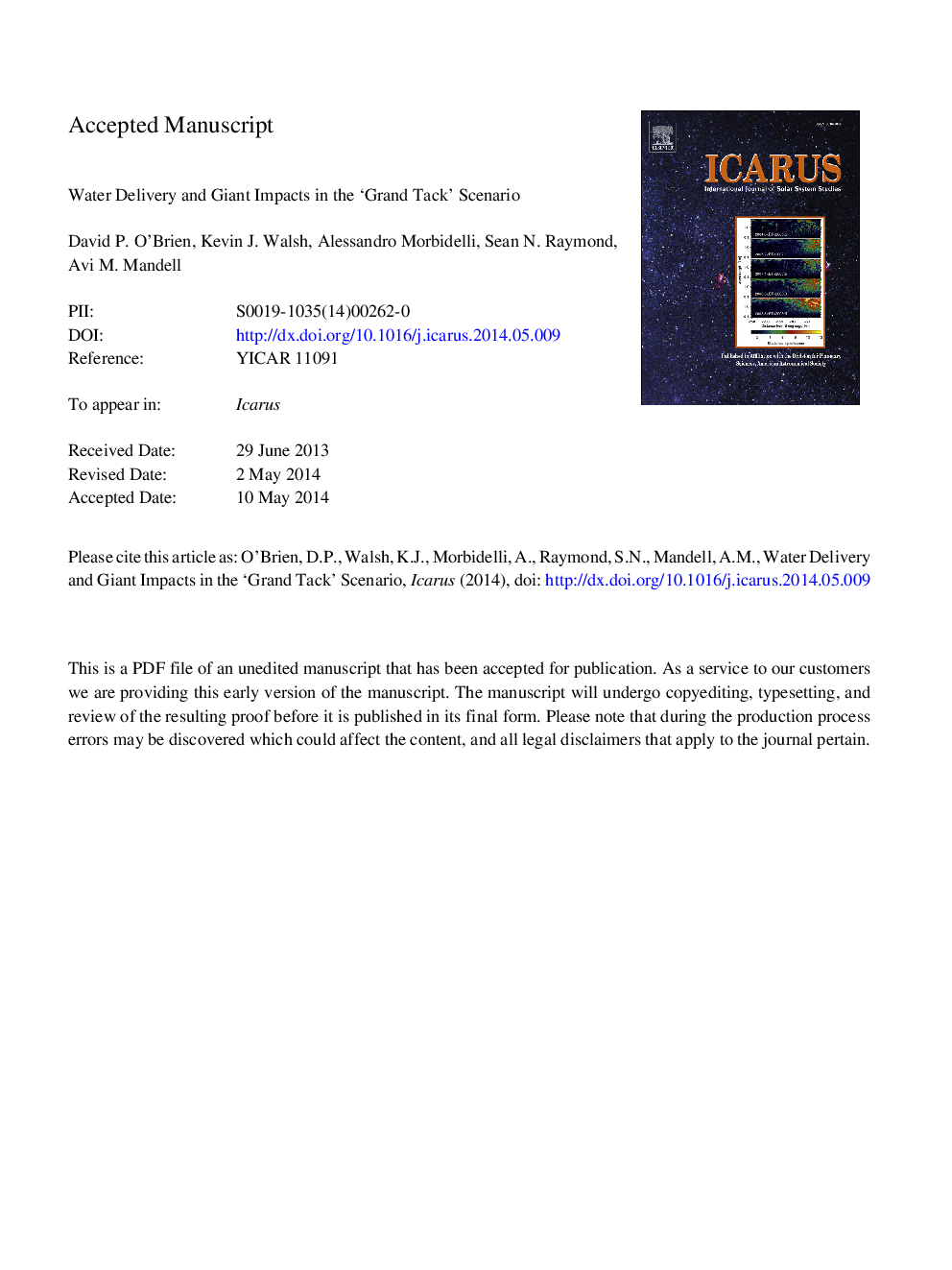| Article ID | Journal | Published Year | Pages | File Type |
|---|---|---|---|---|
| 8137893 | Icarus | 2014 | 47 Pages |
Abstract
One implication of the truncation mechanism proposed in Walsh et al. (Walsh, K.J., et al. [2011]. Nature, 2011, 206-209) is the scattering of primitive planetesimals onto planet-crossing orbits during the formation of the planets. We find here that the planets will accrete on order 1-2% of their total mass from these bodies. For an assumed value of 10% for the water mass fraction of the primitive planetesimals, this model delivers a total amount of water comparable to that estimated to be on the Earth today. The radial distribution of the planetary masses and the dynamical excitation of their orbits are a good match to the observed system. However, we find that a truncated disk leads to formation timescales more rapid than suggested by radiometric chronometers. In particular, the last giant impact is typically earlier than 20Â Myr, and a substantial amount of mass is accreted after that event. This is at odds with the dating of the Moon-forming impact and the estimated amount of mass accreted by Earth following that event. However, 5 of the 27 planets larger than half an Earth mass formed in all simulations do experience large late impacts and subsequent accretion consistent with those constraints.
Related Topics
Physical Sciences and Engineering
Earth and Planetary Sciences
Space and Planetary Science
Authors
David P. O'Brien, Kevin J. Walsh, Alessandro Morbidelli, Sean N. Raymond, Avi M. Mandell,
